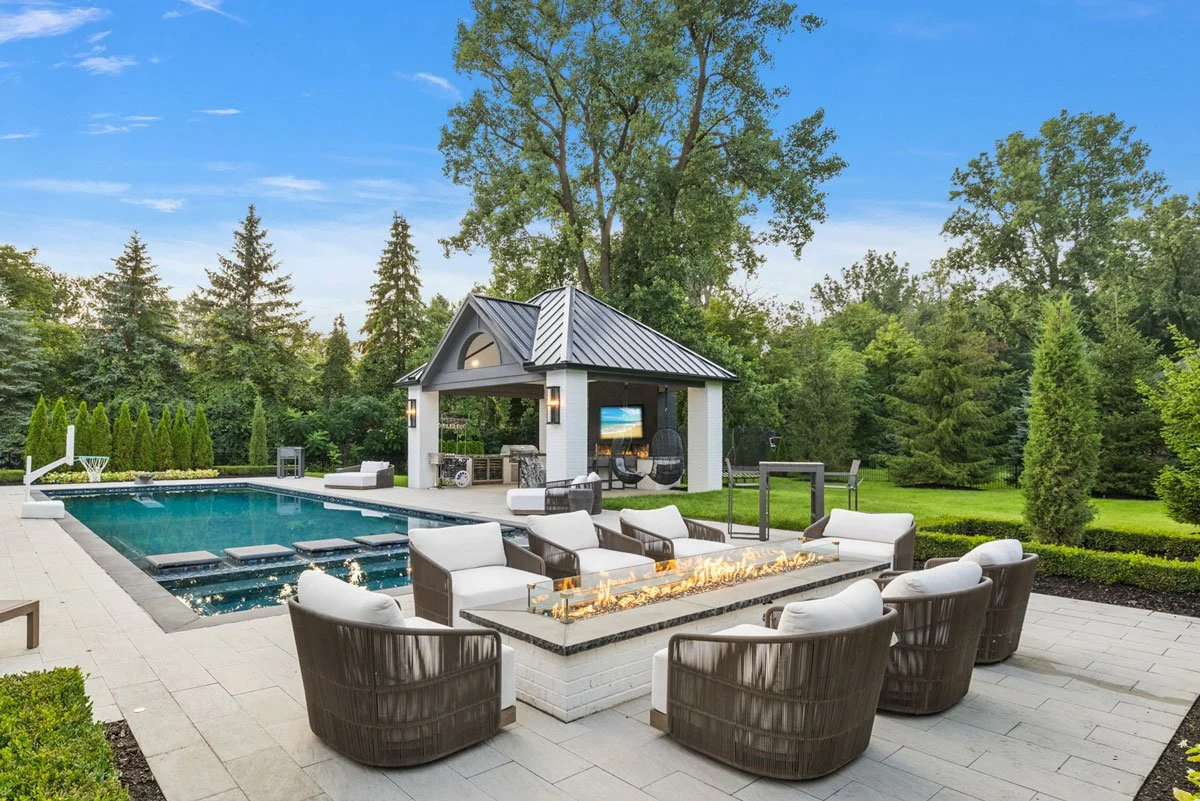Inground Pools 101: Why Gunite Outshines Fiberglass and Vinyl
Everything You Need to Know About Building a Gunite Pool
Introduction: The Real Deal on Gunite Pools
If you're researching inground pool options, you've likely come across gunite, fiberglass, and vinyl liner pools. While each has its place in the industry, gunite stands out in almost every category. In this article, Ventures founder Brandon Bertrang shares why gunite is the foundation of all our custom pool builds—and why it might be the best fit for your home too. From materials and design flexibility to construction, durability, and home value, we’re diving deep into all things gunite.
Why Gunite? A Pool Built to Last
"Most of the pools in our portfolio wouldn't be possible with fiberglass or vinyl." – Brandon Bertrang
1. Unlimited Design Possibilities
Gunite pools are completely customizable. Freeform curves, dramatic edges, sun shelves, vanishing edges, raised spas—if you can dream it, we can build it. Projects like Ridgewood, Trailwood, and Nepavine feature complex shapes and topography that simply wouldn’t work with fiberglass shells or vinyl liners.
2. Structural Superiority
Gunite pools are engineered like homes. Rebar-reinforced concrete sprayed at high velocity forms a rock-solid shell. This means greater integrity on sloped lots like Shoreline or properties with unusual terrain. Unlike fiberglass pools—which require costly retaining walls on uneven land—gunite builds strength into the pool itself.
3. Long-Term Value
Yes, gunite pools cost more up front and take longer to build. But they also last a lifetime with proper care. Think of it like choosing between linoleum and natural stone for your kitchen—both will get the job done, but only one adds luxury, value, and timeless appeal.
4. Truly Custom Finishes
With gunite, you choose everything—from the shape and coping to tile, finish, and water features. Want a saltwater system? Easy. LED bubblers or fire bowls? Done. A built-in spa or infinity edge? Gunite makes it possible.
Is Gunite Right for You?
Not everyone needs or wants a custom pool. If you're looking for a basic 20x40 rectangle and want it done fast and cheap, fiberglass or vinyl could be a better fit. But if you're designing an outdoor space you plan to enjoy for years—and want the best craftsmanship and visual impact—gunite wins every time.
How Gunite Pools Are Built (Step-by-Step)
Designing and building a custom gunite pool involves 5 key stages:
Stage 1: Layout, Framing & Concrete (2–6 weeks)
Pool layout: Staking its shape, marking the perimeter.
Excavation: The pool is excavated and excess soil is removed from the property by truck.
Framing: Rebar is tied in to frame the shape of the pool including elements such as spas, sun shelves, and tanning decks.
Rough plumbing: This includes all plumbing within the pool walls: draining, return jets, therapeutic jets, and all water features.
Inspection: The local building inspector checks the steel frame prior to the concrete being poured.
Gunite/Shotcrete: Concrete is shot into the framing at extremely high pressure, filling the frame and forming to the ground and steel forms.
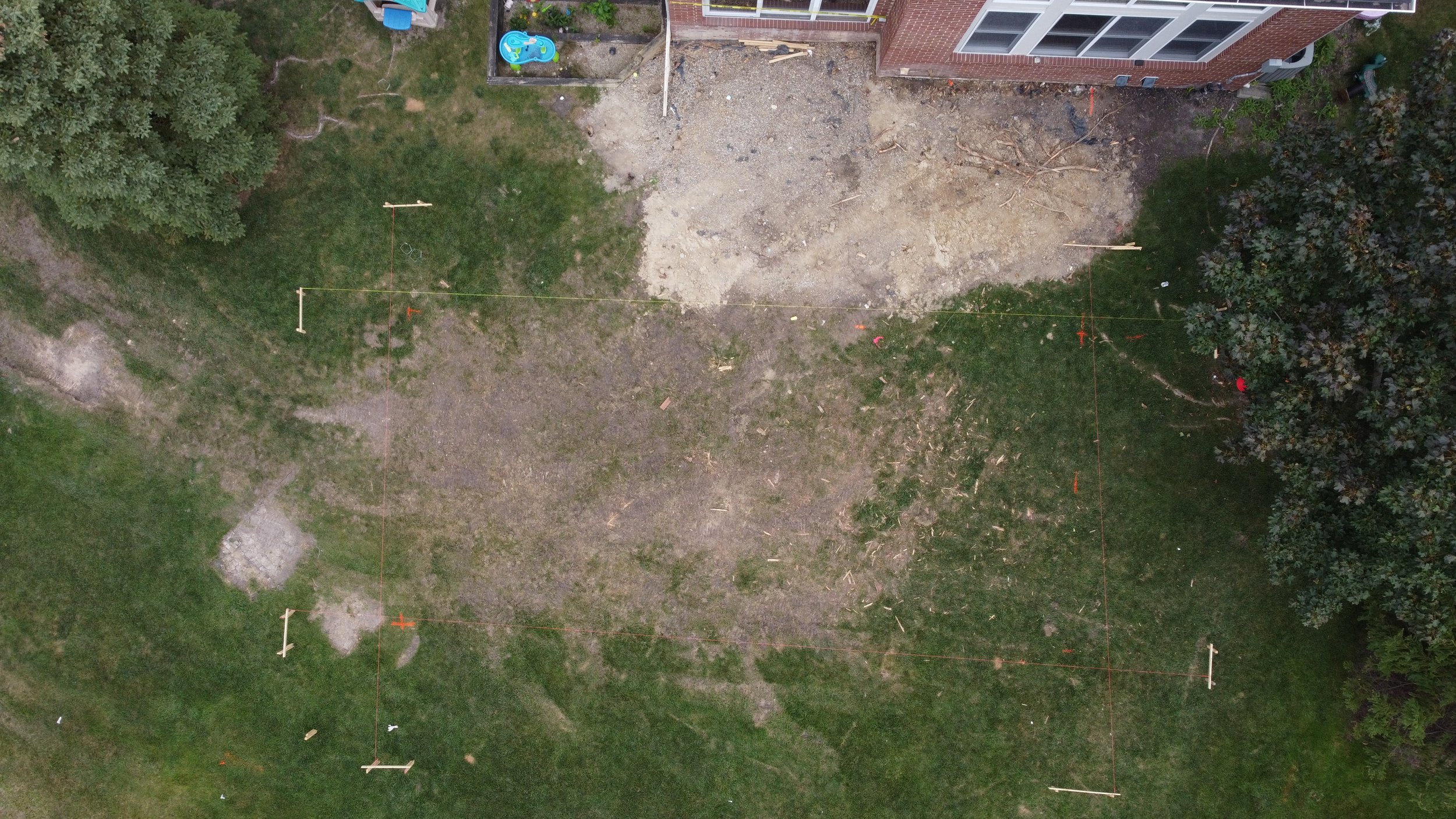
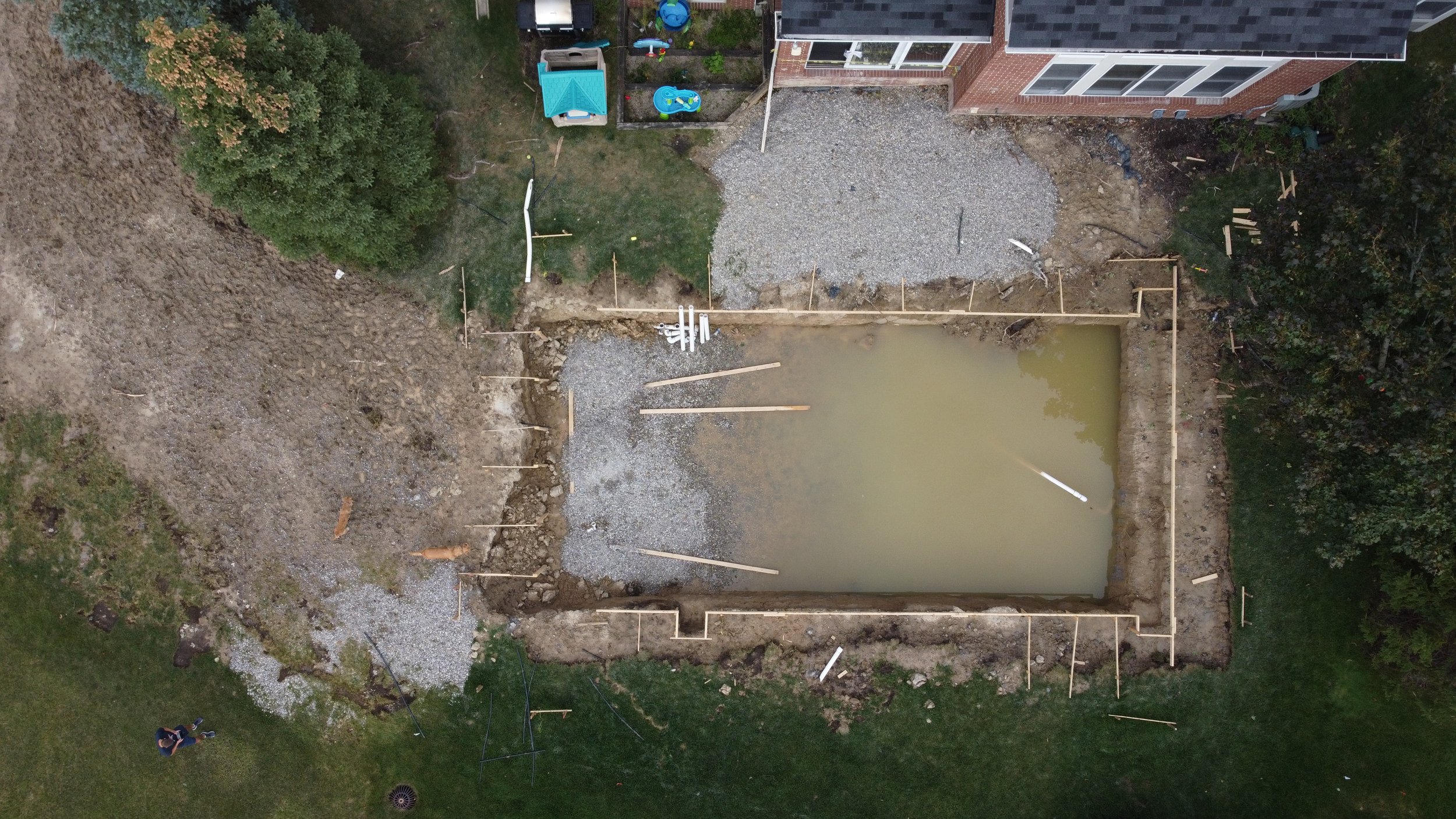
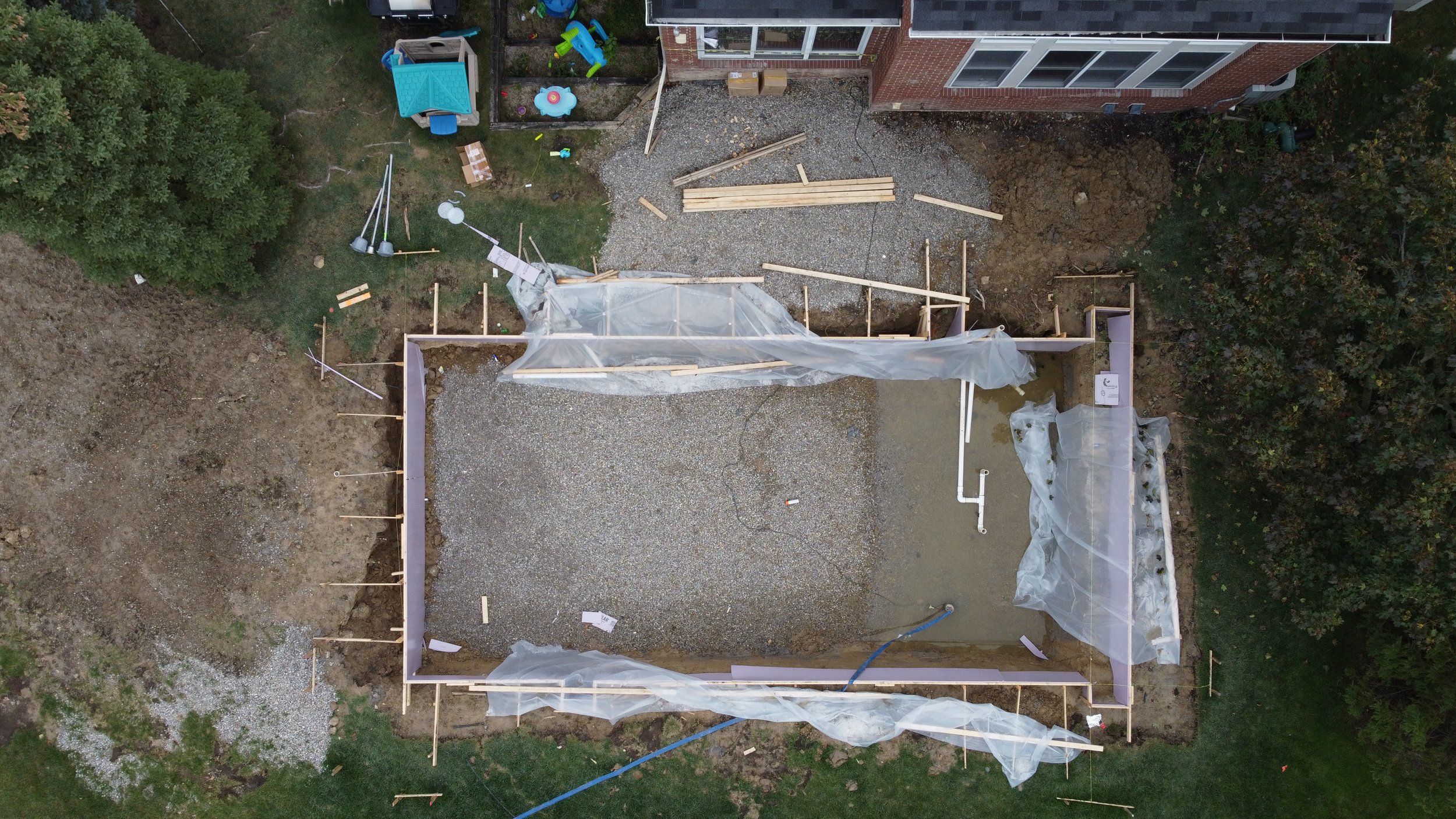
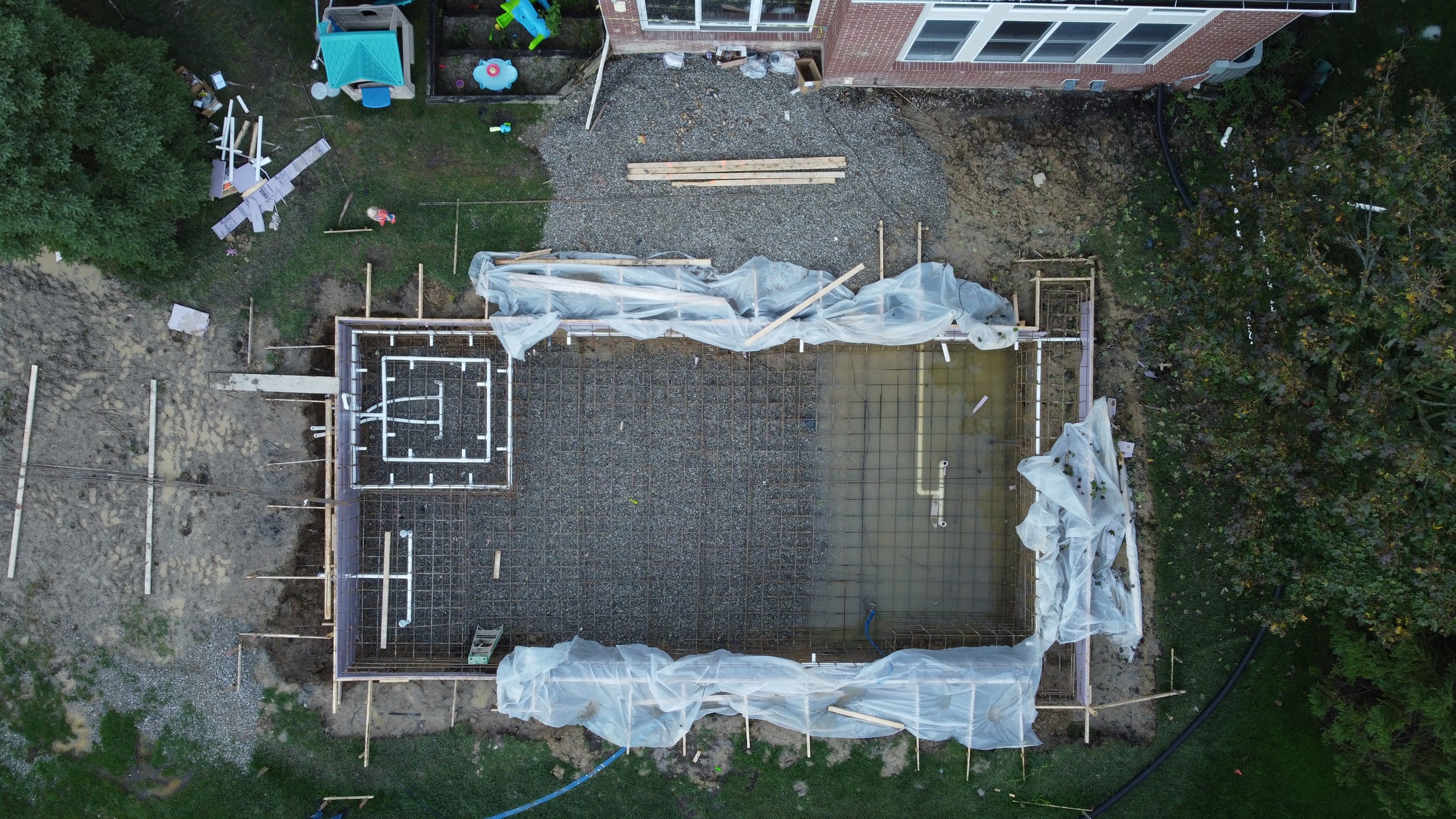
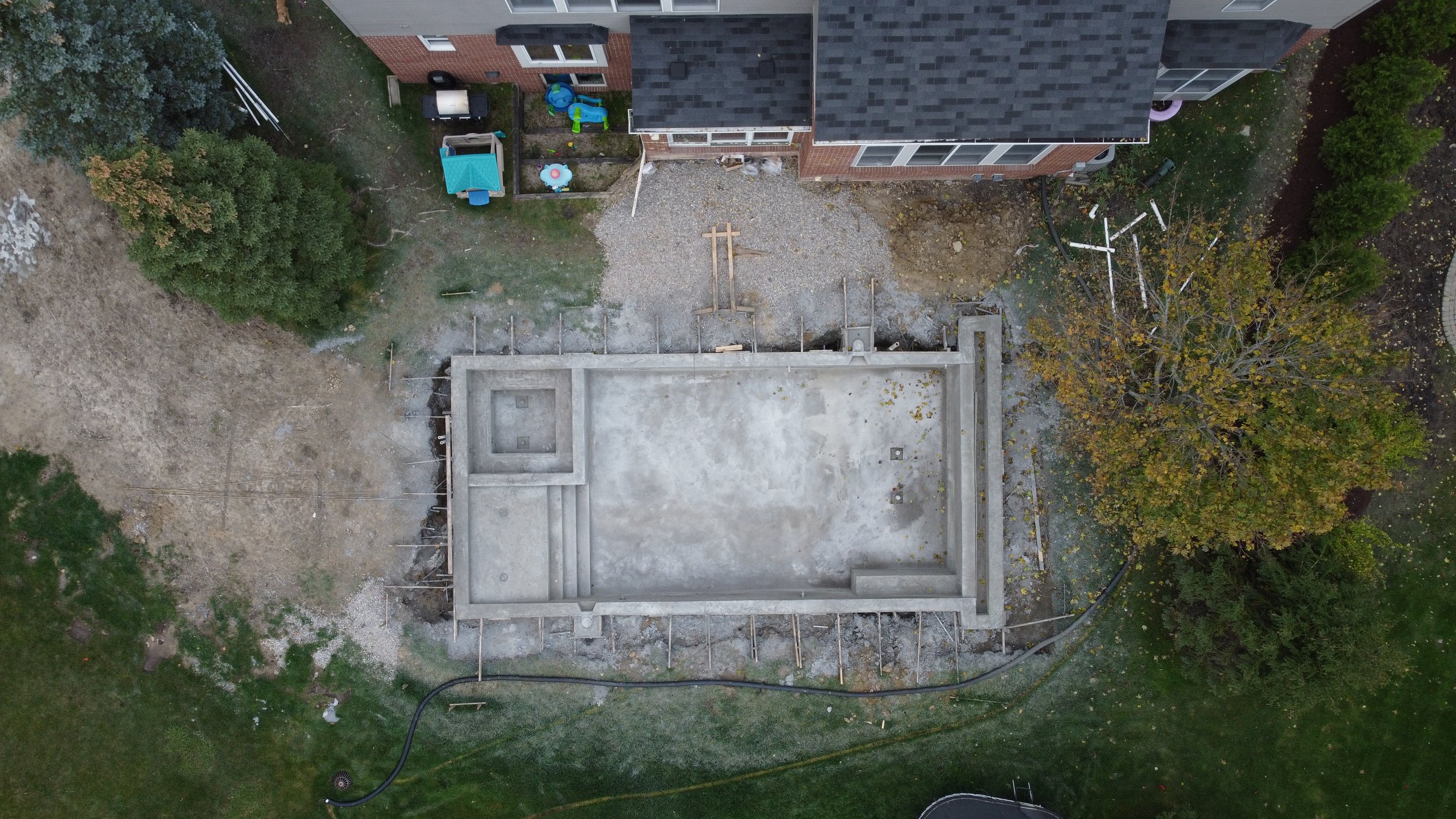
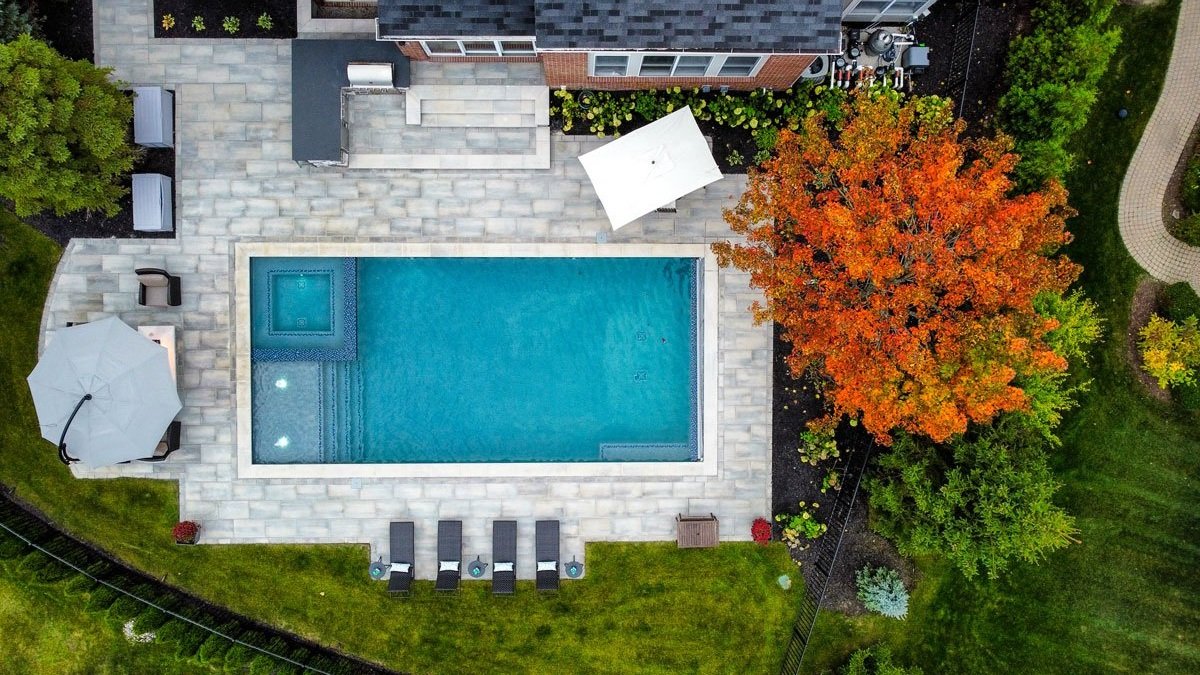
Stage 2: Underground Work (2-3 weeks)
Trenching: A trench is dug around the pool perimeter for plumbing and electricity and the pool equipment pad is poured.
Electrical: All electrical is run for lights and low voltage features.
Finish plumbing: All plumbing that runs between the pool and equipment pads.
Inspection: All plumbing, electrical, and concrete is inspected by the local building department.
Stage 3: Coping and Tile (1-2 weeks)
Coping: limestone or manufactured perimeter is laid.
Tiling: Pool tile is laid on sun shelves, benches, infinity edges, and along the waterline at 6’ with 2’ bands on steps.
Stage 4: Electrical & Surface Prep (1–2 days)
Electrical: Pulling all lights through pools, hooking up electrical to house, checking power for all equipment.
Cleaning Concrete: Remove debris and prep concrete for pool pebble.
Water Proofing: Filling all voids/waterproofing
Stage 5: Interior Finish (1–2 days)
Pebble: Spray on pool pebble or whatever plaster finish the client has chosen. This waterproofs and gives finished look.
Acid Washing: Next working day, the pool is acid washed to clean all the slurry (wet concrete) and makes all aggregate show.
Fill: The same day as the acid wash, a water truck comes to fill the pool and turn it on.
*Many outdoor living spaces feature a lot of hardscaping in addition to the pool. If this is the case, we may wait till the end of the build to install the pebble in order to make sure dust and debris don’t get in and stain the pebble.
After the fill, most clients can swim the same day, though water must be balanced over a 4-week break-in period.
Can a Gunite Pool Be Saltwater?
Yes—most of our clients opt for saltwater systems. Gunite supports all major sanitation methods.
How Long Does a Gunite Pool Last?
With proper maintenance, a gunite pool can last 100+ years. Unlike fiberglass or vinyl, the concrete structure is permanent. Resurfacing may be required over time, but the core structure remains intact.
Fun fact: Marilyn Monroe’s 1929 Brentwood home still has its original concrete pool.
Common Gunite Pool Myths
Myth 1: Gunite pools are always more expensive
Reality: Feature sets and finishes affect cost more than shape. A simple gunite rectangle may cost less than a high-end fiberglass shell with add-ons.
Myth 2: Gunite takes too long
Reality: A thoughtful pre-construction phase shortens build time. We’ve completed pools in under 12 weeks when schedules align.
Myth 3: Gunite can’t be saltwater
Reality: It can—and often is. Saltwater systems are common in custom gunite builds.
How much does a gunite pool cost?
Costs vary depending on features, size, finish materials, and site conditions. To learn more, request our cost guide.
Does Ventures offer fiberglass or vinyl options?
We currently specialize in gunite. While we’re open to future offerings, we believe gunite delivers the best long-term value and design freedom.
Can you build a rectangular pool with gunite?
Absolutely. Many of our most elegant pools feature clean, modern rectangles with high-end materials and finishes.
Have a question we didn’t cover? Drop a comment below. We’d love to hear from you.






